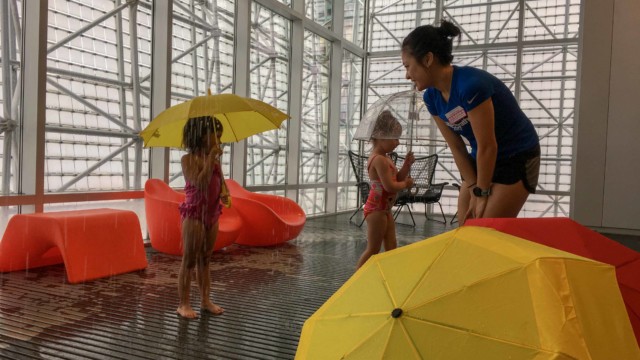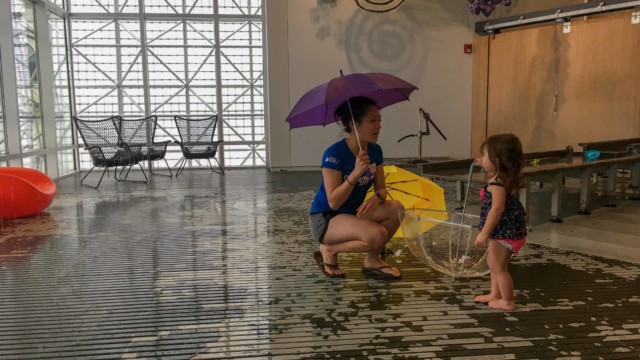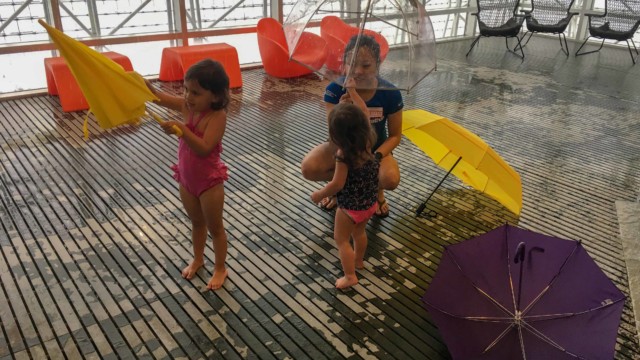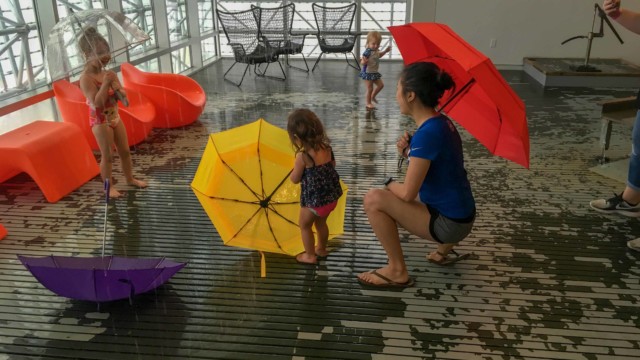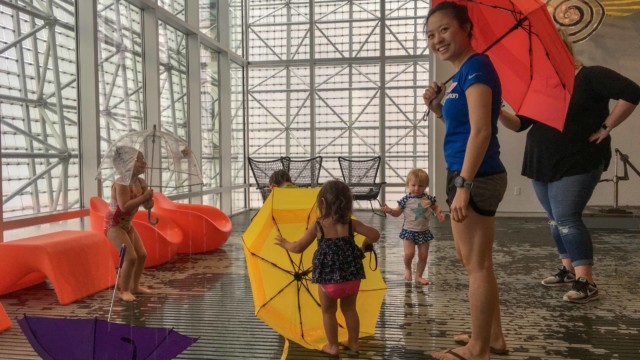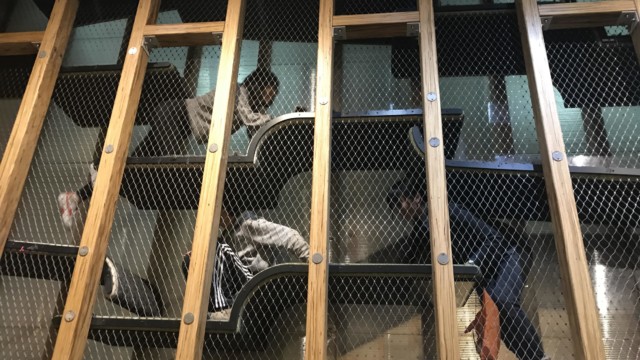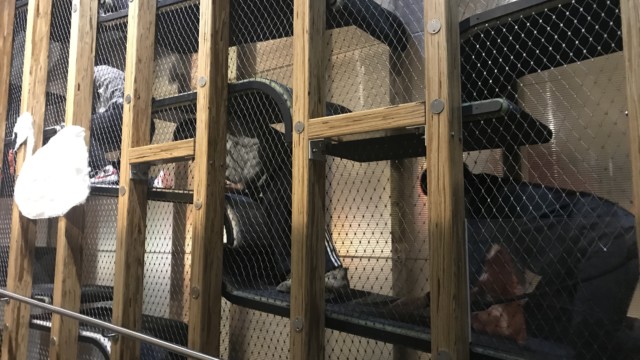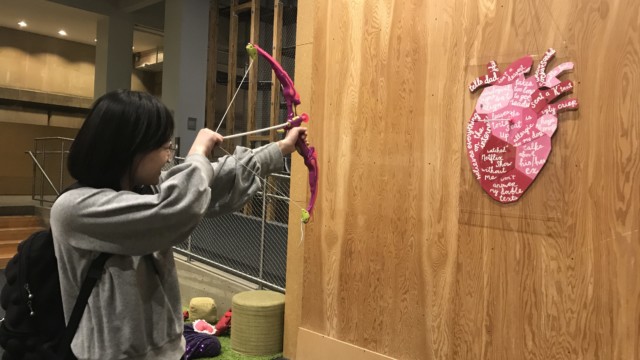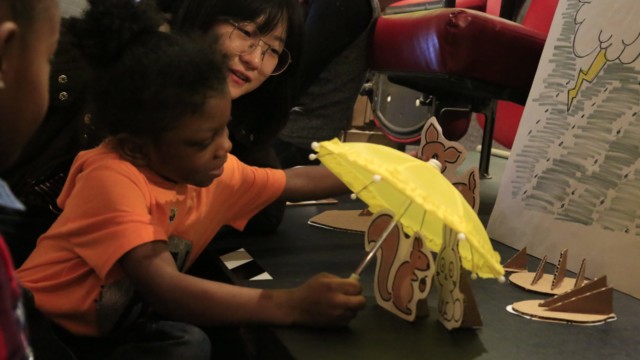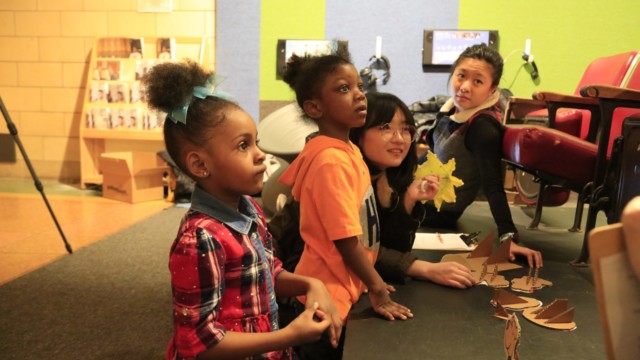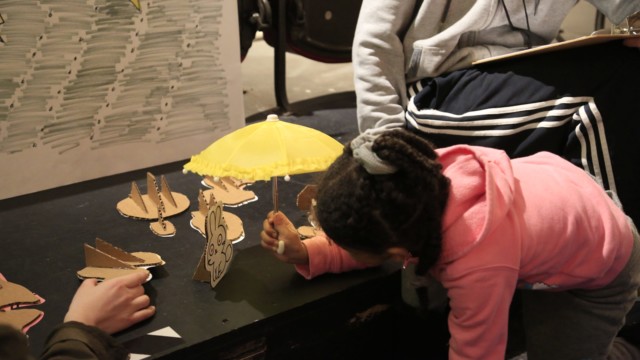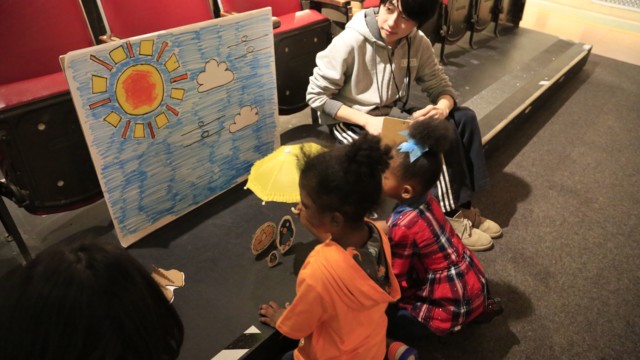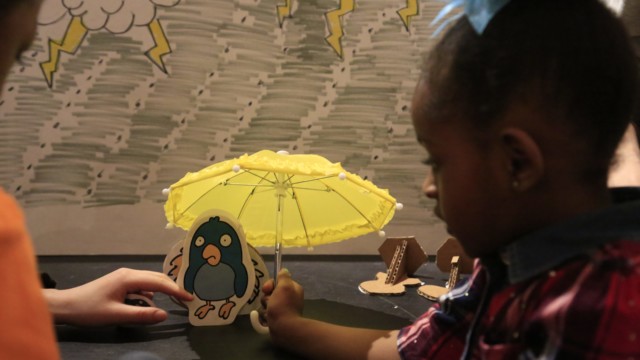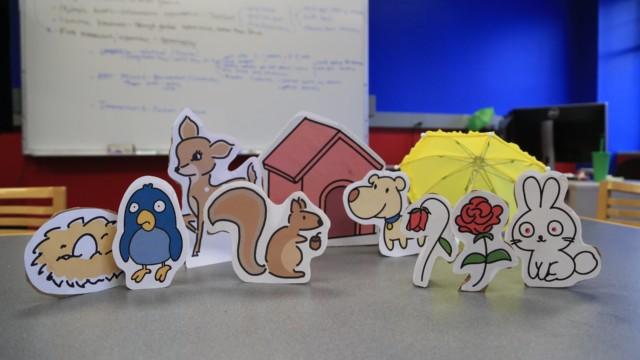Week 5
On Monday, we went to the Children’s Museum for an observation visit. We spent time watching how children and caregivers interact with the exhibits, and coded for different types of interactions. We found that caregivers often interceded in play, explaining to children how the exhibits worked. When children played with a parent, they were more likely to stay at the exhibit for longer (1-5 min). When children entered alone, they exited pretty quickly (under 30 seconds).
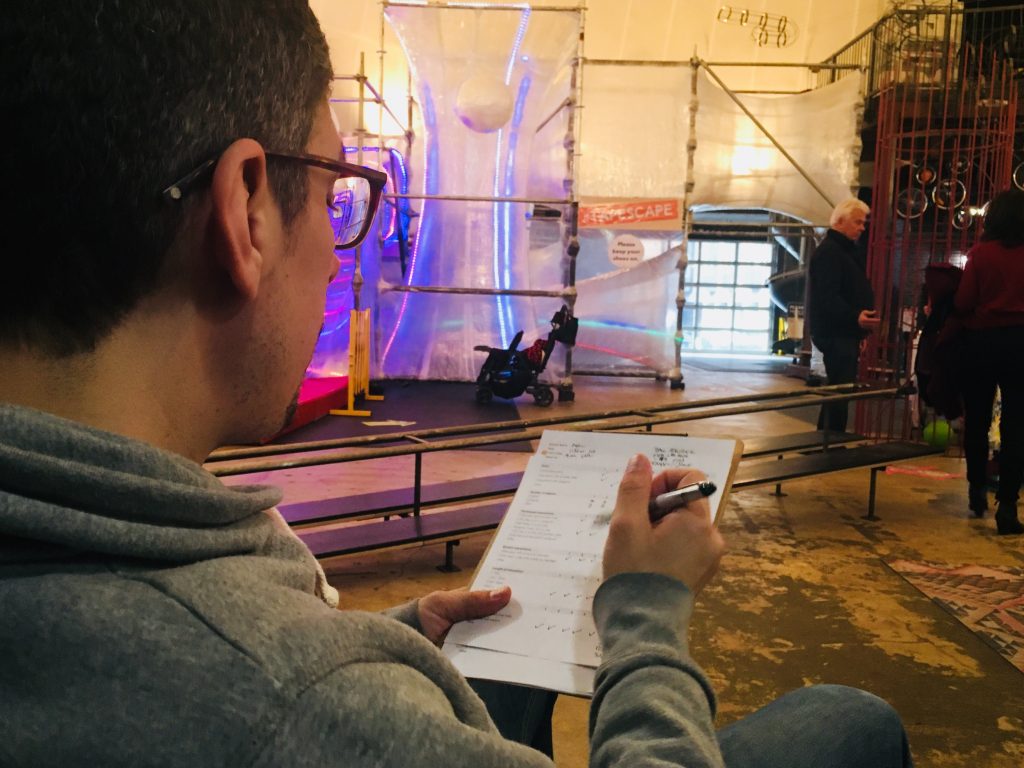
We also brought umbrellas up the Waterplay area to observe how children play with umbrellas. We found that children enjoy opening and closing the umbrella, using it to collect water, and also hearing the sound of water hitting the umbrella under the “rain.” We also found that children did NOT like sharing. They liked to play with their own umbrella and did not interact or share with other children. But they loved the umbrellas! One girl played with the umbrella for the full time of playtesting, and almost started crying when we had to leave. Next time, we might experiment with bringing just one umbrella and seeing what chaos ensues…
On Wednesday, we headed back to the Children’s Museum for our bi-weekly client meeting. We presented art styles that we’ve been working on. The client chose to go with the most realistic cartoon-style. They requested rounder shapes with a 2D like texture, similar to “The Secret Life of Pets.”
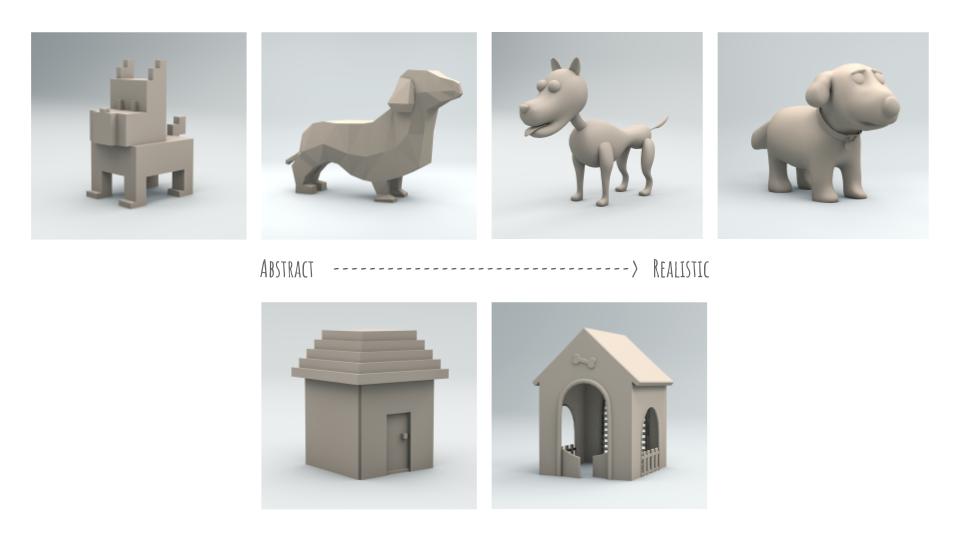
We also discussed the following:
- Updates to the design of the Kindness exhibit
- Expectations for a final deliverable
- Prototype plan
- Examples of how the Museum playtests and successful implementation of playtest data into the design of a current exhibit
Overall, our client meeting was helpful for answering many questions that the faculty asked during quarter sitdowns. In summary, the Museum’s advice for playtesting and prototyping, was to build quickly and test often.
On Thursday night, we returned to the Museum for MAKEnight, a special adult-only event, to observe how adults interact in the space (and to play!). If you thought that kids aggressively played with the exhibits, you should’ve seen the adults… Min also almost got stuck in the climbing wall. But luckily he made it out in one piece!
The next morning we returned back to the Museum to playtest with the preK headstart program. We brought our paper prototypes and ran through interaction scenarios with three groups of children.
During our playtest session there was also an obstacle course that was going on, so the environment was very loud and distracting. This made it tough to hear the children and to maintain their attention. We found that:
- Children were easily distracted by other things happening in the space (next time, we should try to playtest in an isolated setting)
- Children wanted to play with all the prototypes (we needed to put them away between interactions)
- Children didn’t care about the types of animals, they liked them all
- Children did not want to share the umbrella (they would only share when prompted)
- Children found the experience to be engaging, and were pleasantly surprised by the changes in weather and the appearance of different backyard creatures
- Children understood the interactions that we presented and easily were able to solve the tasks
- The order in which we presented the interactions affected the way that they played (if we showed them scenarios with causal tasks, they more likely to interpret every interaction as causal – having a right or wrong answer)
When we asked what children thought kindness was, they mostly responded “being kind” (which is not wrong…). They also thought that it meant “love,” “being nice,” “not bullying,” and “hugs.” The last group of children stated that being kind was helping to protect the animals (hooray! we got one group to understand!). Overall, the playtesting session was helpful to learn how to playtest and we gathered helpful insights. In particular, learning how the order of interactions impacted the way children performed tasks.
From the data gathered during our playtest session, we began to develop preliminary interaction maps. This weekend, we will put together our first build complete with two interactions and accompanying art assets.
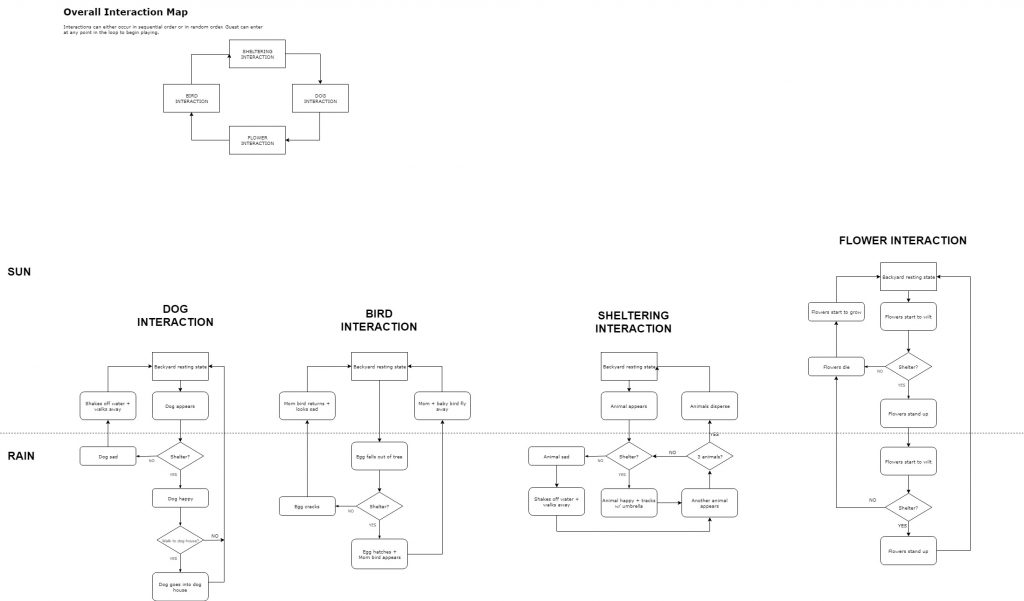
Until next week, be kind,
One Small Act
